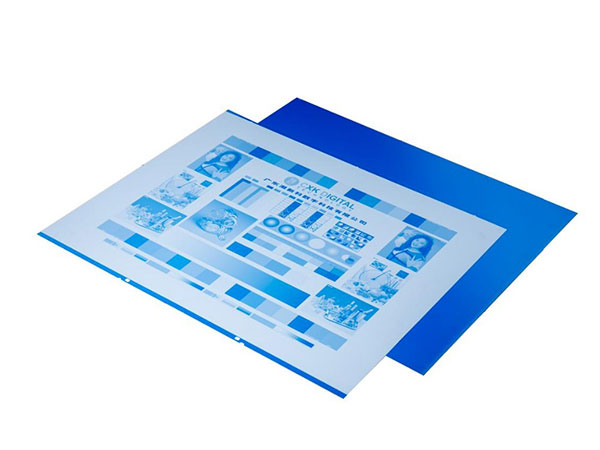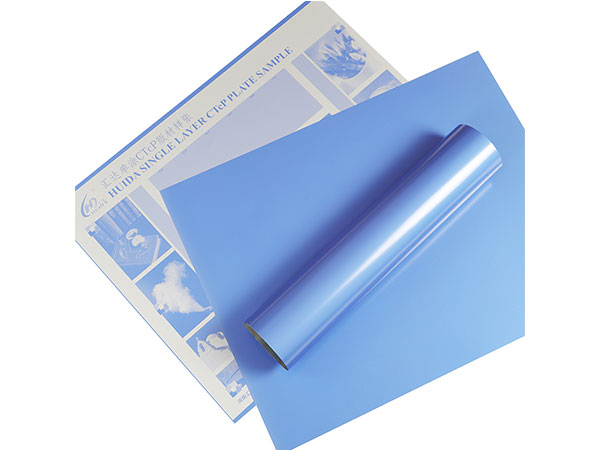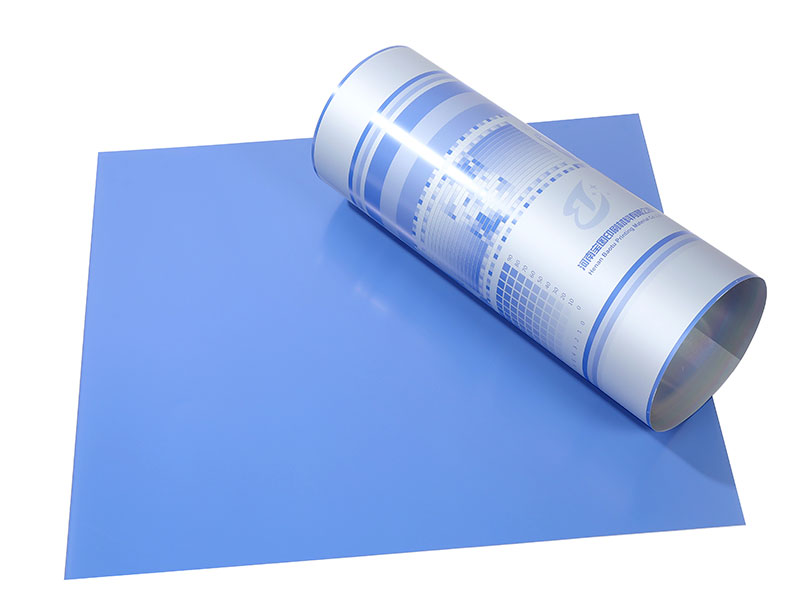| Application | Extremely long run without baking for uv ink printing |
| Thickness | 0.15mm,0.20mm,0.25mm,0.30mm,0.40mm |
| Max width | 1350mm |
| Spectral sensitivity | 830nm |
| Exposure energy | 110~130mj/Cm2 |
| Resolution | 1~99% at 200lpi |
| Specification | 0.15mm 100PCS/box;0.25mm 50PCS/box;0.30mm50PCS/box; 0.40mm 30 PCX/box; customized |
| HS code | 37013024 |
| Transport Package | Export Standard Seaworthy Package |
Double-layer thermal Computer-To-Plate (CTP) technology represents an advancement in the printing industry, specifically for offset printing. This type of plate is designed to enhance print quality and efficiency.
Features of Double-layer thermal CTP plate
Two-Layer Structure
Photosensitive Layer: The top layer is typically a photopolymer emulsion that reacts when exposed to thermal imaging, allowing for the creation of the printing image.
Support Layer: The bottom layer provides strength and stability, essential for durability and handling during the printing process.
Thermal Imaging
Laser Exposure: CTP plates use a thermal laser to expose the image onto the plate. This process is precise and results in high-quality output.
High Sensitivity: The thermal plates have high sensitivity to laser exposure, allowing for faster imaging times and more efficient production.
Improved Image Quality
High Resolution: Double-layer technology allows for fine detail reproduction, providing crisp images and smooth gradients. This is especially important for complex designs and high-quality print jobs.
Wide Tonal Range: Enhanced tonal reproduction is possible, leading to richer colors and better overall image fidelity.
Fast Processing
Short Development Time: The CTP process reduces the time from digital file to print-ready plate, increasing overall productivity. Double-layer plates can be processed quickly and efficiently.
Single Development Stage: Many double-layer plates can be developed in one stage, simplifying the workflow and reducing the risk of error.
Durability and Reliability
Longer Press Life: These plates provide longevity, allowing them to withstand thousands of impressions without significant wear.
Resistance to Abrasion: The robust construction and materials resist physical wear, thus maintaining quality over extended print runs.
Environmental Considerations
Fewer Chemicals: Many double-layer thermal CTP plates either eliminate or reduce the need for chemical processing, making them more environmentally friendly.
Compatible with UV Inks: They can be compatible with UV-curable inks, allowing for greater versatility in printing applications.
Compatible with Existing Equipment
Integration: These plates can often be integrated into existing CTP workflows without the need for significant equipment changes, making them attractive for printers looking to upgrade.
Cost Efficiency
Reduced Waste: The precise imaging and processing reduce material waste, contributing to lower costs per printed piece.
Lower Energy Consumption: The efficiency of thermal imaging can lead to reduced energy usage during the printing process.
Composition and Structure
A double-layer thermal CTP plate typically consists of the following components:
Aluminum Base: The foundation of the plate, providing the necessary rigidity and stability for precise printing. Aluminum is widely used due to its excellent properties such as lightweight, resistance to corrosion, and durability.
First (Sensitive) Layer: This layer is designed to capture and store the image section of the design when exposed to a thermal laser. It provides excellent resolution capabilities, allowing for extremely fine detail and high-quality image reproduction.
Second (Protective) Layer: This top layer helps protect the sensitive layer and enhances the plate’s performance. It aids in improving the plate’s overall durability, ensuring it can withstand more extended press runs without degradation or loss of quality.
How Double-Layer Thermal CTP Plates Work
The operation of double-layer thermal CTP plates involves several precise steps:
Laser Exposure: Using a thermal laser, the plates are exposed according to the digital image file. The energy from the laser precisely targets the sensitive layer, altering its chemical structure to reveal the design.
Development: Post-exposure, the plate undergoes a development process which removes the non-image areas, fully revealing the image intended for printing.
Printing Process: Once prepared, the plate is mounted onto a printing press. Due to its robust structure and precise imaging, it facilitates optimal ink transfer, ensuring high-quality prints.
Post-press Advantage: The dual-layer design enhances reusability and minimizes wear, allowing for consistent print quality across extended print runs.
Applications
Commercial Printing: Ideal for high-volume jobs such as catalogs, brochures, and promotional materials due to superior longevity and image precision.
Packaging: The durability and quality make these plates perfect for packaging solutions that require consistent high-quality output.
High-End Publishing: Books and art reproductions benefit from the fine detail and accuracy they provide.





